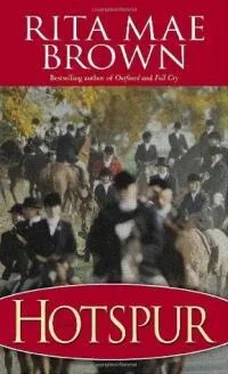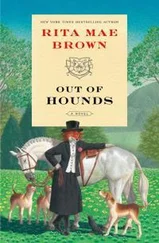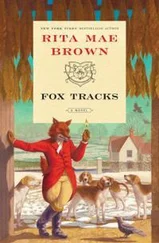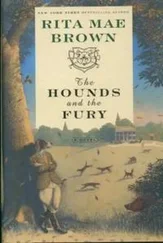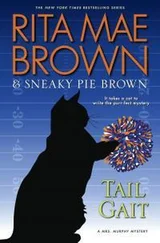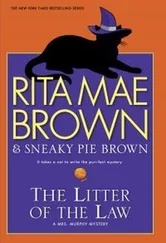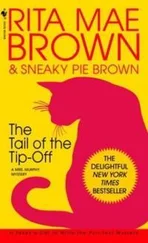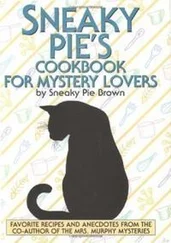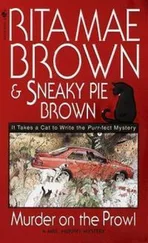The old hunt club truck, Peter Wheeler’s 1974 Chevy with the 454 engine, was parked off to the side of the road.
“Can’t slow down,” Doug pretended to whisper, “she’ll cuss us.”
“I heard that.”
“I thought you were working, not eavesdropping,” Shaker said.
“Women can do two or three things at the same time. Unlike men,” Sister said, laughing.
“Doc, are you going to let her get away with that kind of abuse?” Shaker looked to the blond doctor for help.
“I suggest you call the state employment commission and register a complaint of sexism,” Walter solemnly intoned.
“Oh, do make it a complaint of sexual assault. At my age, I’ll be a heroine.”
They all laughed at that and decided spontaneously to take a break and sit under a huge chestnut tree.
This particular tree was much studied by Virginia Tech students motoring up from Blacksburg, as it was one of the few original chestnuts to survive the horrible blight that almost entirely killed this most beautiful of species. The disease had started in New York State in 1904, spread west to Michigan, north to the border, and south to Alabama. Within a few decades most every native American chestnut, many over one hundred feet high, was dead.
This tree had survived because it was alone.
They were working at Foxglove Farm, a tidy farm north of Sister’s farm. You could see the long, flat top of Hangman’s Ridge to the south from high spots on Foxglove.
The staff and dedicated members of a hunt club worked harder during the summers than during hunt season. Puppies were whelped. Young entry had to be taught their lessons. Foxes would be carefully watched, wormer and other medicines put out for them to ensure their health. Seasoned hounds might need a few reminders of their tasks. The hunt horses would be turned out for vacation time. Young horses, called green, would be trained to see if they could become staff horses, a harder task than being a field hunter. Neighboring landowners would be visited, always a pleasure. Old jumps would be repaired or replaced, and new jumps would be built in new territory to be opened if the club was lucky enough to secure new territory.
Foxglove had been part of the Jefferson Hunt territory from the late nineteenth century, when a group of farmer friends had merged their small packs of hounds together into one communal pack. Many of these men had been veterans of the War Between the States. Their sons and grandsons were destined to be shipped overseas to the horrors of the First World War.
Out of this raggle-taggle mess of hounds, a systematic breeding program emerged under the visionary second master, Major H. H. Joubert, called Double H by all. He blended his tough local Bywaters hounds from northern Virginia with a little Skinker blood from Orange County Hunt. Then he folded in a lacing of English blood. Whether by guess or by God, Double H’s system worked. He was a smart master, he bred for the territory, and he studied other packs of hounds, ever eager to improve his pack and his methods.
Hound men had been bragging about their animals since the early seventeenth century and a few very wealthy colonists imported hounds from England, products of a line that could be traced to a single source.
In 1670, the Duke of Buckingham fell from favor at Charles II’s court. In his disgrace, he retired to North Riding in Yorkshire and established a pack of hounds solely devoted to hunt fox. If the vigorous, robust duke offended His Majesty the King, he pleased subsequent generations of foxhunters, all of whom owe him a debt. Until Buckingham’s time, packs hunted stag, otter, and hare somewhat indiscriminately.
The Duke of Buckingham, a fashionable man as most Buckinghams were and still are, prompted his contemporaries Lord Monmouth and Lord Grey to specialize in foxhunting down in Sussex. These gentlemen began to study their quarry and to consider, intelligently, the best type of hound to hunt such a wily foe.
Thomas, Sixth Lord Fairfax, born in 1693, drew inspiration from this older generation of Englishmen. He lived a long life, dying in 1781, and he kept good records concerning his hounds. Lord Fairfax also had the wit to repair to Virginia in 1748, where he had been granted an estate of 5 million acres—the Northern Neck. The entire Northern Neck between the Potomac and Rappahannock Rivers was his backyard. And he brought his passion for foxhounds with him. Young George Washington hunted with Fairfax, his cousin Col. William Fairfax, and the Colonel’s son, George William Fairfax. When George William Fairfax married the enchanting Sally Fairfax, young Washington fell in love with her, an unrequited love. But foxhunting repaid his passion by giving Washington a lifetime of pleasure.
Then, as now, foxhunting imparted a certain social cachet, and men eager to rise found a good pack of hounds was one way to do so. Ripe arguments continually erupted about who had the best hounds. Some argued for the French Bleu hound; others said the large Kerry beagle was best for the New World. The black and tan had many admirers, and any white hound was always claimed to go back to the medieval kennels of King Louis of France.
Out of this mix came an American hound much like the American human: tough, quick, filled with remarkable drive to succeed. The American hound was of lighter weight than his English and French brothers. His clear voice could be heard in the virgin forests covering Virginia and Maryland even if he couldn’t be seen, and this remains a prime virtue of the American hound.
The Revolutionary War slowed down the remarkable progress that had been made up to that point. After 1781, foxhunters returned to their passion—a passion undimmed even at the dawn of the twenty-first century.
When Sister took over as the fifth master in the hunt’s history she was grateful that she inherited a great pack and she didn’t have to start from scratch. She knew her hound history. She simply had to be reasonably intelligent so as not to screw up Double H’s original plan.
The home fixtures—Roughneck Farm, Foxglove, Mill Ruins, After All, and Beveridge Hundred—nourished the diverse creatures who had been living there since before the white man settled in Virginia in 1607. Decent soil, a wealth of underground and overground water, and the protection of the Blue Ridge Mountains a few miles west conspired to make this a kind of heaven on earth.
Not even a hot, muggy, buggy day like today diminished the glory of the place. Each and every resident believed that she or he lived in God’s country. To make it even sweeter, most of them liked one another. And those few who qualified as flaming assholes were appreciated for providing ripe comment and amusement for the others.
As Sister’s mother used to say, “Nobody’s worthless. They can always serve as a horrible example.”
One such specimen was just puttering down the road.
Alice Ramy stopped her Isuzu truck with a lurch. The four workers sitting under the chestnut tree looked up, composing their features so as not to look discomfited at the lady’s arrival.
Alice’s unhappiness seeped through every pore, marring her pleasant features.
“Sister, if you or your hounds come near my chickens I am taking out a warrant!”
Alice delivered this message at least twice a year. It was usually the pretext for something else.
“Now Alice, my hounds have never so much as glanced at your fine chickens.”
“No, but that damned dog of Peter Wheeler’s killed three of them. Dog should have followed Peter to the grave.”
Rooster, Peter’s harrier, had chased Aunt Netty, an especially fast and sneaky fox, into and then out of Alice’s chicken pen. But poor Rooster—the pen door slammed shut and he was stuck with the corpses of two Australorp chickens. Netty, a small fox, dragged off the other one. No easy task since the beautiful black chickens were quite plump.
Читать дальше
